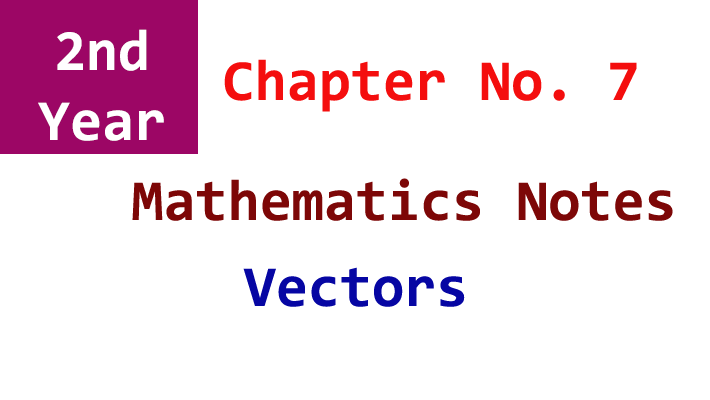Chapter 7 of the 2nd Year Mathematics book is all about vectors. Let’s break down the key points into simple paragraphs.
Exercise 7.1
In Chapter 7, we delve into the concept of vectors in 2nd Year Mathematics. Vectors are quantities that have both magnitude and direction. To understand them better, imagine an arrow: the length represents the magnitude, and the direction indicates where it points.
One essential aspect of vectors is vector addition. This involves combining two or more vectors to find their resultant vector. Picture it like walking along different paths; the final displacement is the vector sum. This process is crucial in various real-world applications, such as physics and engineering.
Exercise 7.2
Exercise 7.3
Exercise 7.4
Exercise 7.5
- Chapter No. 15 Homeostasis 2nd Year Biology
- Chapter No. 16 Support and Movement 2nd Year Biology
- Chapter No. 17 Coordination and Control 2nd Year Biology
- Chapter No. 18 Reproduction 2nd Year Biology
- Chapter No. 19 Growth and Development 2nd Year Biology
Another significant topic covered is scalar multiplication. This means scaling a vector by a scalar (a numerical value). Multiplying a vector by a scalar changes its magnitude without altering its direction. This operation is fundamental in mathematical modeling and problem-solving.
Furthermore, we explore the dot product of vectors. This mathematical operation yields a scalar by multiplying corresponding components of two vectors and then adding them. The dot product finds applications in physics, where it helps determine the angle between two vectors.
Cross product is another concept introduced in this chapter. Unlike the dot product, the cross product results in a vector. It involves multiplying the magnitudes of the vectors, the sine of the angle between them, and a unit vector perpendicular to the plane containing the two vectors.

